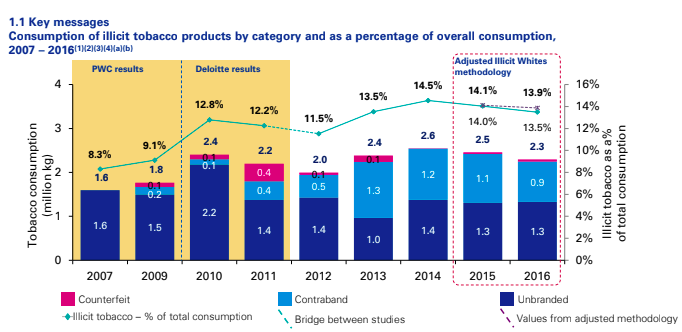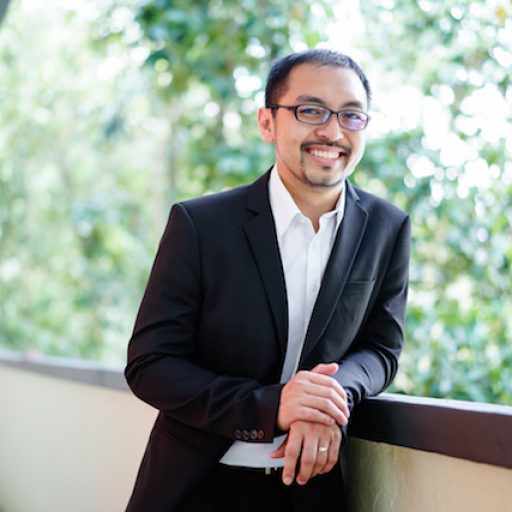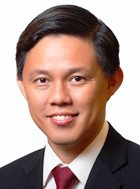Pre-U Sem 2014 was attended by about 500 students from JC, Poly and IP schools and I had the privilege of speaking on a panel to about 100 of these students alongside former NMP Claire Chiang, VP of Banyan Tree, and Martin Tan, Co-Founder of Halogen Foundation.
We were mostly fielded questions throughout the session on the afternoon of the 6th of June, but I was able to answer from nearly all of my prepared speech. My speech text is below:
Ladies and gentlemen,
Thank you for the opportunity to address you. I’d like to talk to you about trust and how it will play a huge part all our futures.
Trust is a key element in every human relationship. How you, I, we, view each other. Without it, relationships break down. Without it, conflict rules.
Trust is also a key part of the relationship between the Government and its people. It is here that we find ourselves at an inflexion point in our society. There is a shifting of the foundation of our trust, from one built on the delivery of an economic promise, to one that is more ideological, for which trust has not yet been built. The past success of Singapore, and the good choices that our leaders made then, have given us a stable platform from which to forge a new kind of trust, but the window of opportunity for building this new trust is closing.
I write a blog and on it I comment on social, political and policy issues. My blog’s tone has changed over the years and I learned that the best outcomes are to be had when I put in the effort to see things from both sides of the fence.
When I mean “best outcomes”, I’m not talking about the most supportive comments or highest web traffic. The best way to get that is to post angry rants in support of one polarized end of the spectrum or the other. It’s so often true – you actually have to post something angry, accusing, or scandalous if you want web traffic. Or cats.
For me the best outcome is when everything I care about moves forward. When people grow and learn and have a chance at building something together. For me the best outcome is when there is trust.
It’s about realizing that the truth and the way forward always lies somewhere in the middle of two extremes.
To do this I maintain relationships with people who represent both sides of as many arguments as possible. I’m not just talking about political extremes, with PAP die-hards on one end and guys who can spray graffiti on rooftops on the other. No, our society is polarized along many other dimensions – income, education, liberal/conservative, male/female, any of a thousand small issues.
I make an effort to criticize, but to be constructive wherever possible. To give suggestions, to try and interpret messages in a less offensive way. To point people to something bigger that they can look to. Constructiveness is a starting point of trust.
To trust, we have to begin with the assumption of a constructive other. By this I mean that when you look around you, you immediately assume that the other person wants to build for some sort of greater good. Maybe not the same greater good that you had in mind, but one that could make sense, even though you dislike it.
People that actually want to destroy everything as an end goal are quite rare. Destruction is often the first step in building, and we do it all the time. We must not mistake a destructive act by another as a sign that this person or group wants to destroy everything.
At the parliamentary debate last week, Dr Maliki Osman said that the Government must trust its people by giving them the benefit of the doubt, even if they are critics. He said that they must be engaged to build, even if their vision is different. The same is true of the people for the Government, or between fellow citizens. We need it to build our future.
But what is the future we want? Some of our future is a convergent future, with shared hopes and dreams. But there is also a divergent future, where each of us wants to mould our world in a very personal and specific way.
We all want different things. We must recognize that it isn’t wrong for us to want different things for the future. Things that may be at odds to what another Singaporean wants.
Yet this issue of divergent futures will always threaten to pull us apart. We must not seek to remove diversity, but to work with it and get the most out of it. To do this we need strong leadership – strong leadership to keep a level of equilibrium in our divergent futures. Strong leadership to negotiate a middle ground. If we are to play a bigger future role in building trust among the peoples of Singapore, then you and I must provide strong leadership.
I know that many of you have heard that you, as part of the educational “elite”, are the future leaders of Singapore, but this is not the “strong leadership” I am talking about. Your intellectual leadership, your academic leadership, is not the primary sort of leadership that we need to negotiate national trust. Academic leadership will be useful, even necessary, but the leaders that Singapore needs to build trust are first and foremost empathic leaders.
How can we be empathic leaders?
Empathise. Learn to see the world through the eyes of others. Gain exposure, and I’m not talking about mandatory gawking field trips to third world countries. It must be more than seeing – you need to pursue feeling. Feel the joys and the pains of another. Feel the hope and despair of someone who does not share the same worldview as you do.
Communicate. The most important aspect of communication is you ability to listen. That’s why empathy comes before this. Then talk. Dialogue. Engage in respectful debate. Learn the logic and nuance of what others want, especially those who seem to oppose you.
Avoid participating in what are known as “echo chambers” – groups whose members merely reinforce each others’ biases and help to polarize one another. Make sure you talk to people who defy your point of view, and whom you cannot seem to win a debate with – these are the real issues – the ones without clear answers. Spend time thinking about these points of view.
Negotiate. Find the middle ground. Give up some of your dreams so that everyone can walk away with something. Find a common thread, a harmonious chord. Beautiful music and cacophony are made of the same notes – the only difference is in how everything is arranged.
Cooperate. Turn opponents into partners. Start down a path of action and find people who you can co-opt to build together. Mutual work in the right spirit builds trust.
Be trustworthy. Act in a consistent manner. I don’t mean that you can never change your stand on issues, but that you do it with grace and humility. Do everything that you promise you will do. Do not be tempted to betray. Nothing destroys a relationship of trust faster than betrayal.
Be vulnerable. Vulnerability engenders trust. Talk honestly about how you feel. Fight the need to put up a false front. Be open to change. It is no shame to change. It is good to change.
Apologise when you should. And if you find that you have not had to apologise for a long while, I think that is a sure sign that you have done something that you should apologise for. We are human, we must assume that we make mistakes. In the same vein, be prepared to extend grace to someone who has betrayed your trust, when the right time comes.
These are things that you will not be learning in your textbooks, but which you will have an opportunity to learn in school. I wish that there was some way to grade you all on this dimension of leadership because it is what Singapore will need now, need tomorrow, if we want to build deeper trust in our society.
We need strong leadership that is able to build a nation alongside those that oppose it; strong leadership is not a matter of who wields the most power, but about who wields his power wisely.
Singapore’s time for adversarial relationships, adversarial engagement must come to an end. We all want to build. Nothing good will come of wrestling over the construction tools, fighting over the blueprints, playing the rich against the poor, the academic against the everyman, one race against another, one agenda against the other.
We need strong leaders to show us how to trust. I pray that some of you will.















